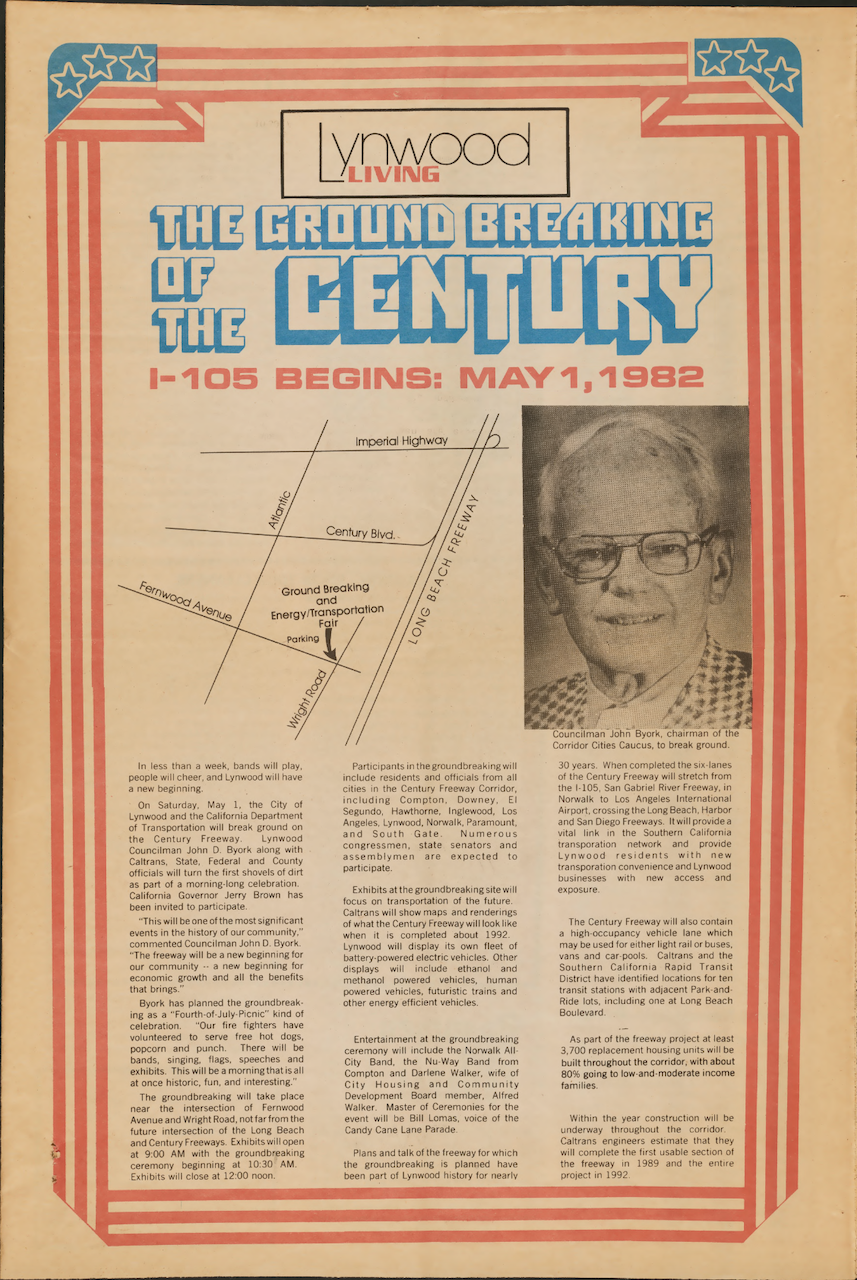Judge Harry Pregerson and the Consent Decree
Judge Harry Pregerson and the Consent Decree
In 1979, the California Department of Transportation entered the consent decree that not only altered the freeway’s dimensions but also mandated substantial investment in social programs to mitigate the project’s impact on communities.[1]
The final consent decree for the Century Freeway ushered in a new era of urban development, intertwining infrastructure with social progress. Under the purview of this groundbreaking decree, a range of initiatives emerged, including housing programs, job training, affirmative action programs, and child-care services, all within the context of a freeway project that accommodated a future transit line. At the time of the Century Freeway’s opening, costing more per mile than any other road in America, it was regarded by some as not merely a transportation project but a feat of social engineering. Judge Pregerson’s Federal consent decree required the allocation of billions towards social programs, including new housing for the 25,500 displaced individuals, job training initiatives for minorities and women, as well as tutoring and scholarships for underprivileged children.
The Building of the Century Freeway
Although the Consent Decree brought some improvements and addressed certain issues that initially plagued the construction project, life in and around the corridor still bore the impacts of ongoing construction.
A quarterly report from the Office of the Advocate for Corridor Residents sheds light on some of the challenges faced by those who remained in the corridor, notably severe dust problems during construction. In October 1987, Cheryl D. Watson, a resident of Los Angeles, wrote to Caltrans regarding the serious issue of dust and dirt from the nearby construction of the Century Freeway site adversely affecting her family’s health. She emphasized the constant presence of dust and dirt in her home, which significantly impacted her family’s well-being. Given the clear health hazard posed by the project, she requested that Caltrans provide relocation options without imposing penalties.
The response from Larry S. Stevens, a Senior Right-Of-Way agent in Caltrans, was undoubtedly disheartening to the Watson family. He informed Mrs. Watson that the best they could do was spray water onto the dirt to reduce dust emissions from the construction zone. Moreover, he informed her that state law prohibited the purchase of the Watson property.
Related Documents












